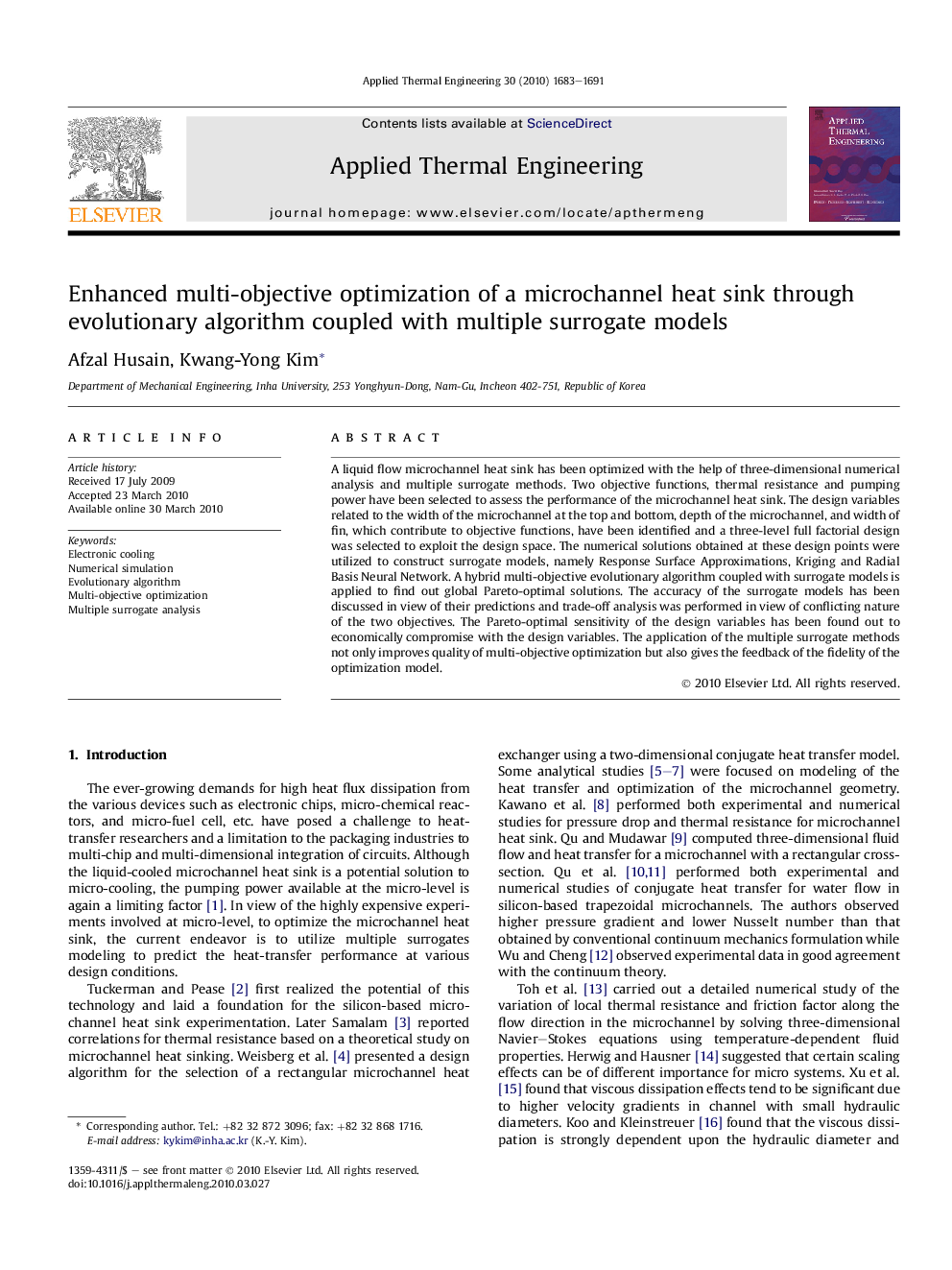| Article ID | Journal | Published Year | Pages | File Type |
|---|---|---|---|---|
| 648129 | Applied Thermal Engineering | 2010 | 9 Pages |
Abstract
A liquid flow microchannel heat sink has been optimized with the help of three-dimensional numerical analysis and multiple surrogate methods. Two objective functions, thermal resistance and pumping power have been selected to assess the performance of the microchannel heat sink. The design variables related to the width of the microchannel at the top and bottom, depth of the microchannel, and width of fin, which contribute to objective functions, have been identified and a three-level full factorial design was selected to exploit the design space. The numerical solutions obtained at these design points were utilized to construct surrogate models, namely Response Surface Approximations, Kriging and Radial Basis Neural Network. A hybrid multi-objective evolutionary algorithm coupled with surrogate models is applied to find out global Pareto-optimal solutions. The accuracy of the surrogate models has been discussed in view of their predictions and trade-off analysis was performed in view of conflicting nature of the two objectives. The Pareto-optimal sensitivity of the design variables has been found out to economically compromise with the design variables. The application of the multiple surrogate methods not only improves quality of multi-objective optimization but also gives the feedback of the fidelity of the optimization model.
Related Topics
Physical Sciences and Engineering
Chemical Engineering
Fluid Flow and Transfer Processes
Authors
Afzal Husain, Kwang-Yong Kim,
